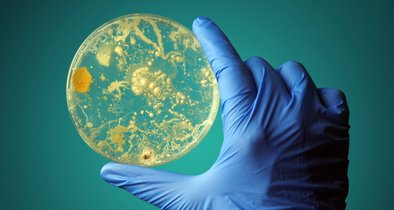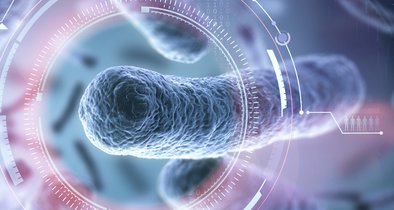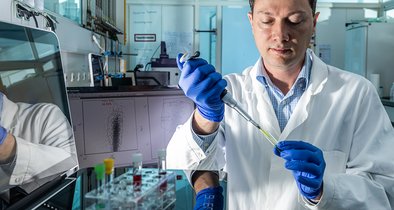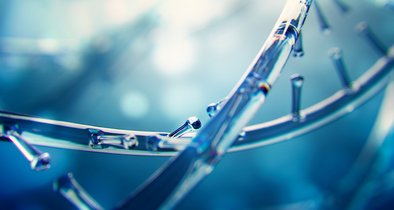Microbiological expertise
and advanced technologies
Professional microbiological know-how and GMP-certified analysis methods
Limitations of molecular and traditional microbiological testing methods
The development and manufacturing of microbiome-based therapies requires profound microbiological understanding of the relationship and interactions between the selected microorganisms and the host microbiome ecosystem.
But there are certain obstacles and limitations of conventional microbiological methods, that researchers have to overcome in order to gain the required knowledge.

The limits of cultivation methods
Up to 99% of the bacteria present in the human body are non-cultivable or difficult to cultivate on artificial cultivation media. Furthermore, in most cases anaerobic conditions need to be applied in order to obtain enrichments and pure cultures and to understand microbial activities of the microbiome. If it succeeds, process is time-consuming which makes the detection and analysis of strictly anaerobic microorganisms extremely challenging.

Usefulness of molecular biology
Modern methods such as Next Generation Sequencing (NGS) can comprehensively analyze and resolve the bacteria of the microbiome in a very short time, without the need for cultivation. However, there are several unresolved issues: Inhibitors present in the sample can affect the sensitivity of the assay and lead to false results. Chimera formation during PCR can lead to false identities. And last but not least, the sequence analysis does not provide any information about the cells viability or cell-cell interactions.

No direct look into the ecosystem of the microbiome
Although NGS may provide a powerful overview of the present bacteria by delivering huge amounts of sequences, it is not an all-purpose method. It can't neither track specifically certain microorganisms, nor analyze for host-microbiome interactions. It allows an overview but nodirect look into the real composition of samples. Therefore, correct microbial realities are hard to assess as crucial information may be missing.
We fill the gap between the pharmaceutical industry and knowledge about the microbiome
vermicon supports pharmaceutical companies, CDMOs and developers of probiotic bacteria with an individually adaptable portfolio of alternative microbiological methods. We have standardized FISH (fluorescence in situ hybridization) and additionaly optimized it for the needs of industrial microbiology. The result is our patented VIT® technology, which allows for identifying and visualizing bacteria directly in their habitat thus uncovering mechanisms and correlations that cannot be determined by using only sequence data or conventional cultivation methods. This enables us to provide meaningful answers swiftly and efficiently.
Technology portfolio
We use a variety of different detection methods – either separately or in combination, in order to achieve rapid, efficient and excellent results.

FISH Technology
With the help of FISH (fluorescence in situ hybridization) technology, bacteria can be analyzed directly in their habitat. Being pioneers of this technology, we have decades of experience in adapting the method to the specific problems of the industry and applying it successfully.

Flow Cytometry
Flow cytometry is a powerful method that can be applied in many areas of microbiome research and of the pharmaceutical industry. In combination with the highly specific FISH gene probes, specific identifications of whole cells can be performed as well.

Other Methods
We can offer our customers the entire spectrum of alternative methods. Our primary focus is always on the goal to be achieved. Even if the currently provided methods does not fit, we are able to close the gap by developing custom methods.
If you need further assistance or have any questions related to the microbiological analysis of microbiome-based therapeutics, please do not hesitate to contact our team of experts. We will be pleased to assist you.
Application of FISH for analysis of the microbiome
The human microbiome is a highly complex ecosystem composed of bacteria, archaea, fungi, protozoa, and viruses. This small universe of microorganisms is the subject of intense interest and research in the scientific communities. With the help of FISH (fluorescence in situ hybridization), bacteria can be analyzed directly in their habitat.
Dr. Jiri Snaidr, CEO and founder of vermicon AG explains how FISH works and which advantages it can provide, especially for scientists and companies active in the microbiome research.

Microbiome research
The human microbiome is a highly complex ecosystem. Products based on living microorganisms generally don’t work in a direct way, but interact in a multifactorial mode of action.

Live Biotherapeutics
To ensure the efficacy and safety of Live Biotherapeutics, a deeper understanding of the relationship between the microbiome and the human health is needed.

Probiotics
Improving the development and production process of probiotic bacteria through direct microbiology. Identity, purity, stability and viability (LIVE/DEAD) analysis directly in the sample.
